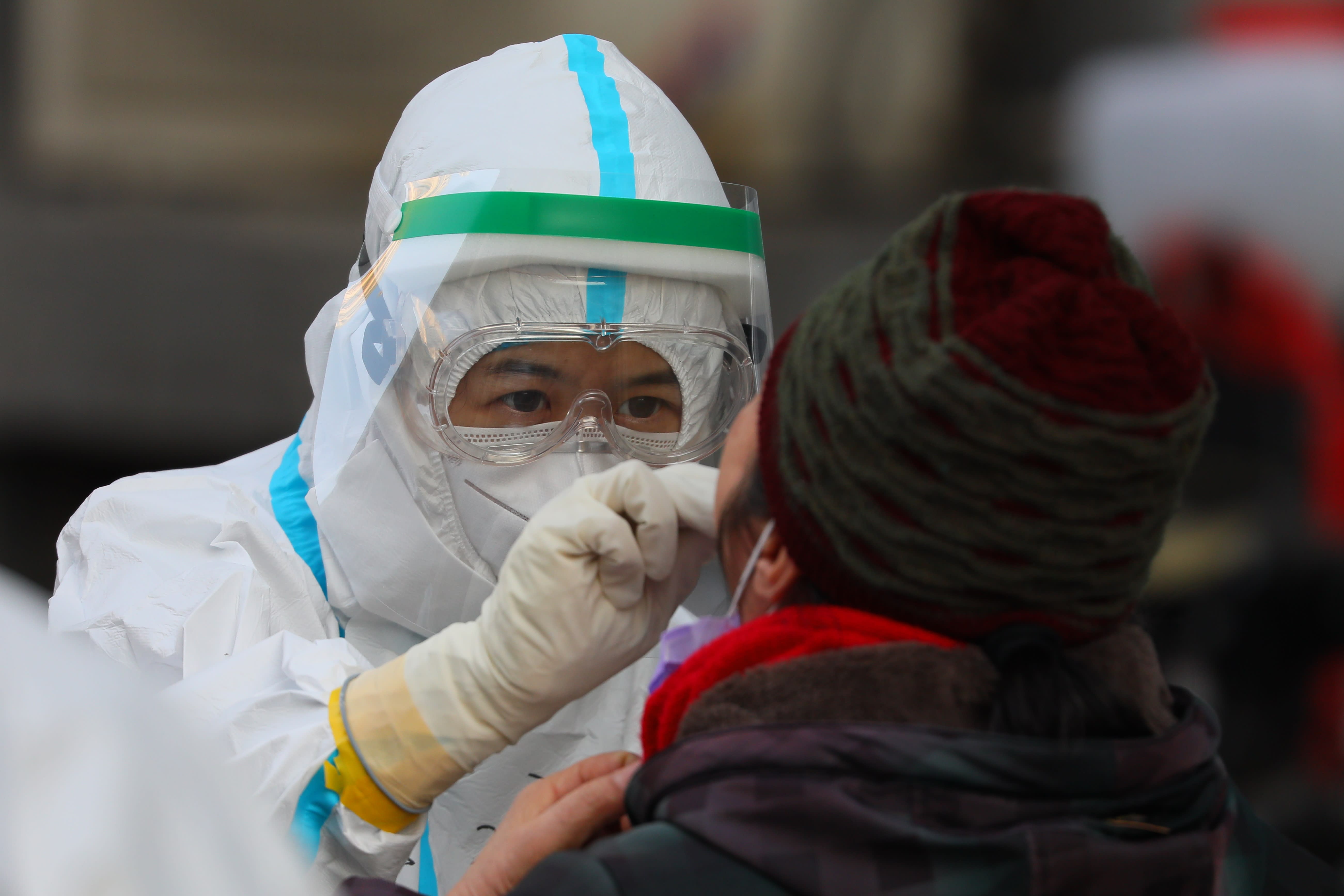
Health care worker conducts throat swab test in Shijiazhuang, Hebei province, China on Jan. 18, 2021.
Costfoto | Barcroft Media | Getty Images
More than half a year since Covid-19 stalled its spread within mainland China, new clusters of cases have emerged in and around the capital city of Beijing in the last few weeks.
The persistent spread of the virus, particularly in the province of Hebei that surrounds Beijing, has prompted authorities to lock down several regions and urge people nationwide not to travel during the upcoming Lunar New Year festival. The holiday officially falls this year in mid-February.
“Considering the swift responses by local governments, the efficient test and tracing systems and the ongoing vaccine rollout, we believe the situation will be eventually brought under control,” Ting Lu, chief China economist at Nomura, said in a Jan. 18 note. “However, the unusually cold weather and the incoming lunar new year (LNY) travel rush could make the task of containing the virus more challenging.”
“The hospitality sector is set to slow, while the industrial sector may remain solid,” Lu said, adding that “markets may need to lower their expectations for strong pent-up consumption demand during the upcoming LNY holidays in mid-February.”
Hebei province began disclosing a spike in coronavirus cases at the start of this year, with daily numbers topping 90 last week. The figures do not include the many asymptomatic cases found through mass testing.
Here’s a look at the provinces that have reported confirmed coronavirus cases since Dec. 1, with darker shades representing areas with higher number of cases:




